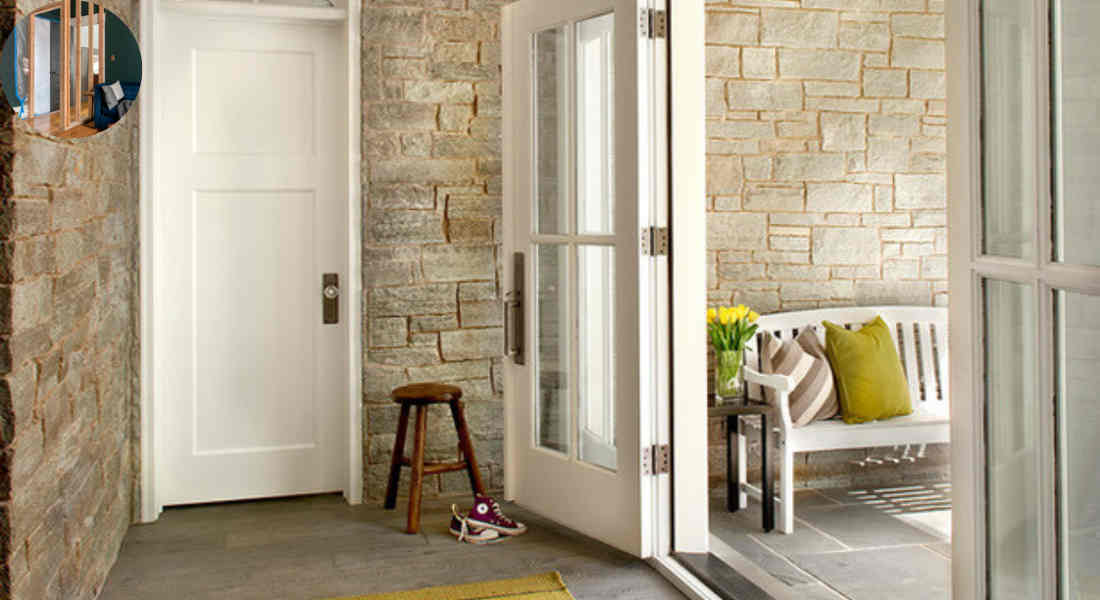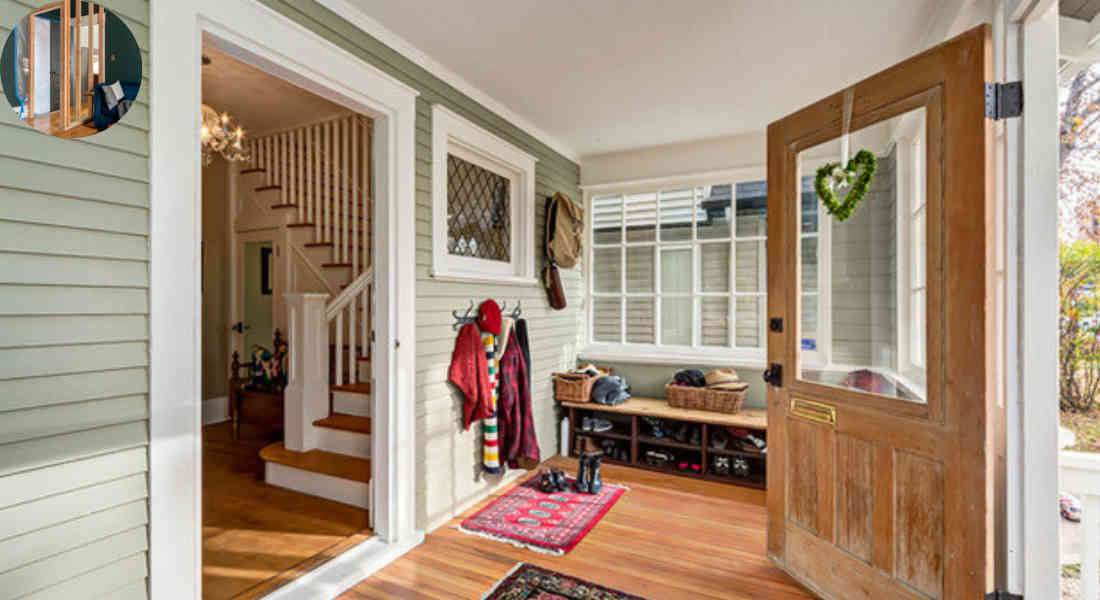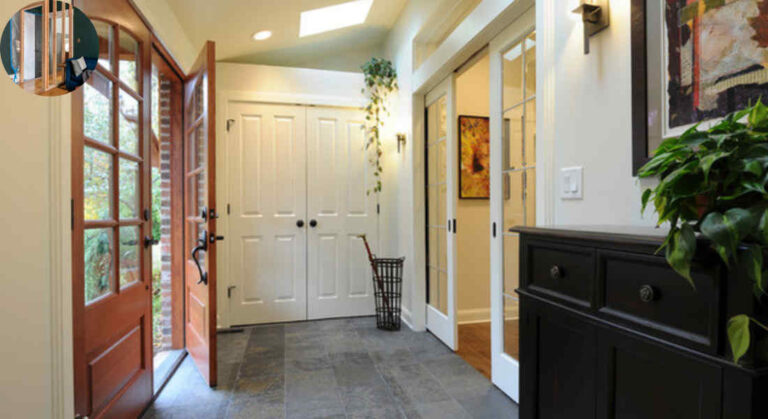In today’s world of modern home design, the importance of thoughtful entryways has grown immensely. The entrance to your home is more than a simple doorway; it’s the first impression for visitors, a functional space for homeowners, and a transition between the exterior and interior. Among the many elements of entryway design, one feature that is making a strong comeback is the vestibule.
So, what is a vestibule in a house? A vestibule is a small, enclosed area or transitional space between the outdoors and the interior of a home. Often referred to as a “mudroom” or “entry hall” in some contexts, vestibules have both historical and practical significance. Historically, they were used in ancient Greek and Roman architecture as a buffer between the outside and the main living areas. Over time, their design evolved to address various needs like privacy, temperature control, and organization.
What Is a Vestibule in a House?
Let’s start with the basics: what exactly is a vestibule in a house? Architecturally, a vestibule is a small room or hallway that serves as a buffer zone between the outside world and the interior of a building. It is a welcoming transition space that bridges the outdoors and indoors.
The Role of a Vestibule
A vestibule functions as a transitional area. It’s where you pause to take off your shoes, hang your coat, or check the mail before fully entering the home. This helps to keep dirt and debris from spreading indoors while also providing a place to organize outerwear and accessories.
In colder climates, vestibules are exceptionally functional. They are a barrier against outdoor elements such as wind, rain, and snow. An enclosed space between the outside door and the interior can reduce drafts and improve energy efficiency.
Historical Context
The concept of a vestibule isn’t new. Its origins can be traced back to ancient Greek and Roman architecture, where it was used as a formal entryway to grand homes or temples. Over the centuries, vestibules evolved to meet the practical needs of various cultures and climates. During the Victorian era, for instance, vestibules were common in homes to provide privacy and create a sense of grandeur.
Types of Vestibules
There are several types of vestibules, each serving a unique purpose:
- Small Anterooms: Compact spaces designed for apartments or small homes.
- Entry Halls: Larger and more decorative, often seen in traditional homes.
- Storm Hallways: Explicitly designed for harsh weather climates, these serve as a protective barrier.
Common Features
Vestibules often come equipped with functional elements to maximize their utility, such as:
- Coat racks or hooks
- Benches for seating
- Storage for shoes or umbrellas
- Double doors to enhance insulation and privacy
Whether large or small, vestibules are versatile and adaptable to various home styles and needs.
The Functional Role of Vestibules in Modern Home Design
Vestibules may feel like a small addition to your home, but they serve many crucial functions beyond aesthetics. From energy conservation to added privacy, here’s a closer look at their practical benefits in modern homes.
You may also read (how much does a typical house weigh in the uk).
Temperature Control and Energy Efficiency
One of the most significant benefits of a vestibule is its ability to regulate indoor temperatures. Acting as a thermal buffer, a vestibule prevents the direct exchange of indoor and outdoor air when doors are opened.
- In winter, the vestibule traps cold air, reducing heat loss.
- In summer, it keeps hot air from entering your home.
This not only improves comfort but also lowers heating and cooling costs. For environmentally conscious homeowners, vestibules are a sustainable design choice that can significantly reduce energy consumption.
Privacy and Security
Have you ever opened your front door only to feel exposed to the view of neighbours or passing strangers? Vestibules solve this issue by serving as a privacy barrier. Visitors can enter the vestibule without having direct access to the rest of your home.
From a security perspective, vestibules act as a buffer zone for screening visitors. You can open the inner door to greet someone without fully exposing your living space.
Noise Reduction
If you live in a busy urban area or near a noisy street, a vestibule can help minimize sound infiltration. The enclosed space absorbs and blocks outdoor noise, making your home quieter and more peaceful.
Aesthetic and Practical Benefits
A vestibule isn’t just functional—it can also be a beautiful addition to your home. With thoughtful design, it creates a welcoming and organized entryway that sets the tone for the rest of the house.
Practical features like built-in storage, shoe racks, and benches make it easier to keep your entryway clutter-free. This is especially helpful for families with kids, where outerwear and accessories can pile up quickly.
Health and Hygiene Considerations
In today’s world, where cleanliness is a priority, vestibules offer a space to remove shoes, coats, and other outerwear before entering the main living areas. This helps reduce the spread of dirt, allergens, and germs inside your home.
By combining these functions, vestibules prove to be an invaluable addition to modern homes.
Design Considerations for Vestibules in Contemporary Homes
Planning the design carefully is essential if you’re inspired to add a vestibule to your home. Here are some key factors to consider:
Size and Layout
The size of your vestibule should match your home’s style and the climate in your region. A larger vestibule may be necessary in colder areas to accommodate heavy outerwear and boots.
Door Types and Placement
Choosing the right door style is crucial. Popular options include:
- Double-door systems: Ideal for insulation and security.
- Sliding barn doors: Perfect for a rustic or industrial look.
- French doors: Add elegance and allow natural light to flow in.
Materials and Insulation
To maximize energy efficiency, use materials like:
- Glazed glass for natural light.
- Insulated walls and doors to maintain temperature control.
Lighting and Ventilation
A well-lit vestibule feels inviting and airy. Consider adding:
- Skylights or sidelights for natural light.
- Ventilation systems to improve air quality.
Multi-functionality
Combine your vestibule with a mudroom or a guest entry space for added utility. For example, you could include:
- A laundry station for wet clothes.
- A seating area with built-in storage.
Technology Integration
Modern vestibules can be equipped with innovative features like:
- Smart locks and security systems for added safety.
- Temperature controls to regulate the space.
By tailoring the design to your needs, you can create a functional and stylish vestibule.
Case Studies and Examples of Vestibule Use in Modern Homes
The Vestibule House Project
One well-known example is the Vestibule House project, which emphasizes energy efficiency and livability. This innovative design uses the vestibule as a central feature to reduce energy consumption while enhancing comfort.
You may also read (does removing a chimney breast really devalue your home).
Traditional vs. Modern Applications
In traditional homes, vestibules often feature ornate details like wood panelling or stained glass. In contrast, modern vestibules focus on minimalism, with clean lines and functional elements.
Modular Vestibules
Modular vestibules are gaining popularity in new construction projects. These prefabricated units can be customized to fit any home style, offering flexibility and efficiency.
You may also read (what are the key disadvantages of a house trust).

